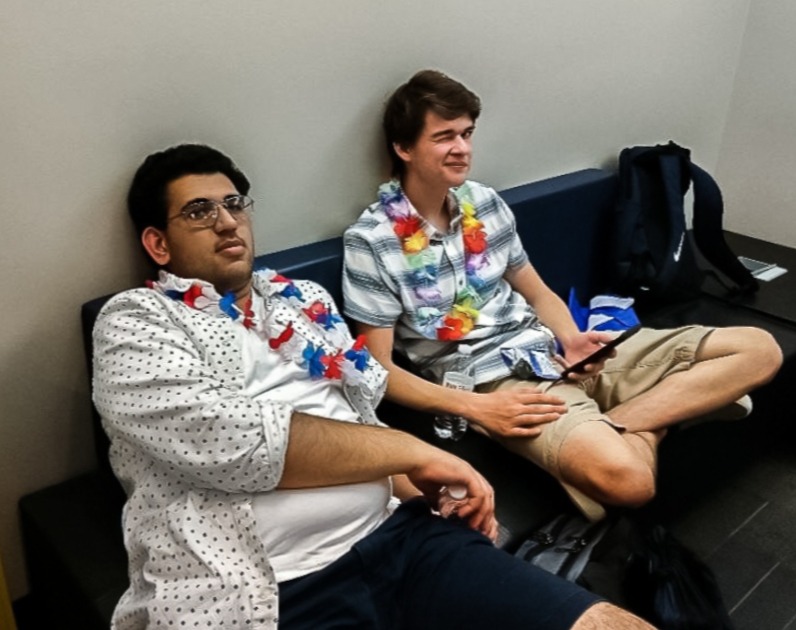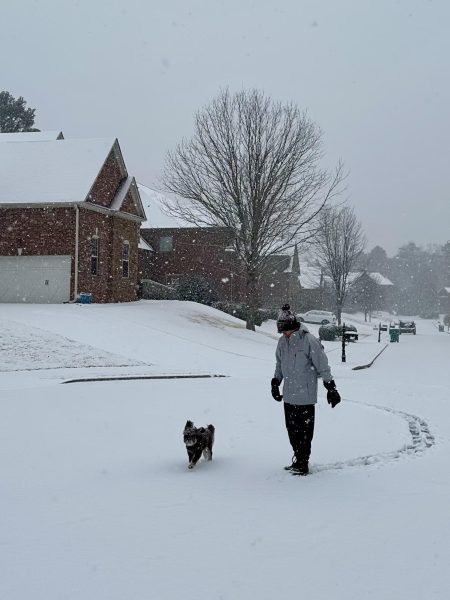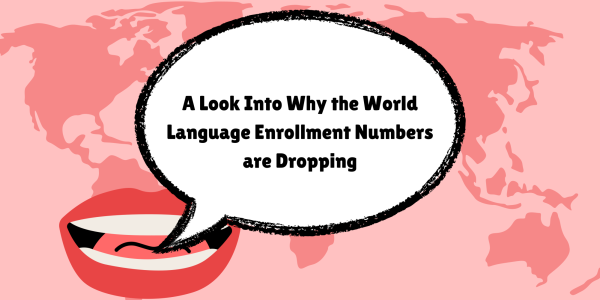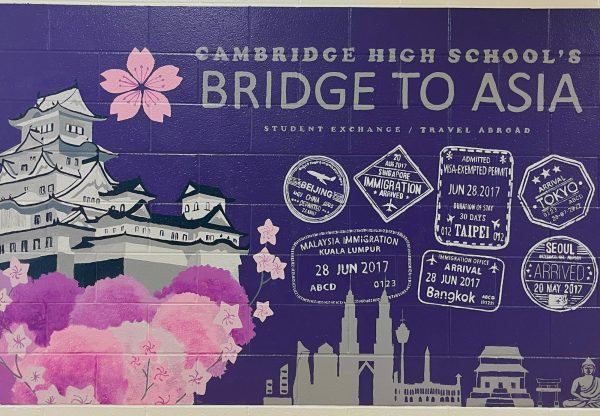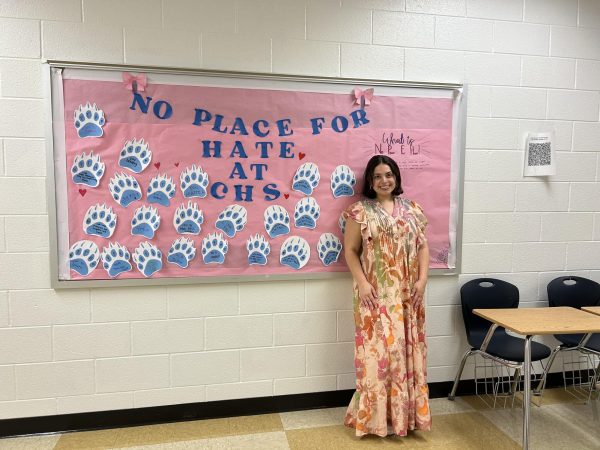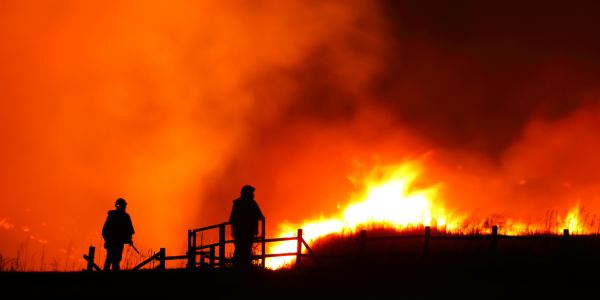“Not Just Two People Arguing”: Inside the Real World of High School Policy Debate
There’s more to debate than meets the podium.
Senior debaters Ayush Kumar (left) and Logan Sowder (right) in their debate attire: leis and Hawaiian shirts
On either side of an arena, two students stand at podiums. In a box overhead, a panel of robed judges overlook the students, while a crowd is gathered in the seats.
A jumbotron provides subtitles for audience members who can’t hear the students as they fire arguments back and forth.
When they return to their teams for a recess, the screens replay important moments in the round.
This scene is what junior Lukas Martinson thinks of when he hears the words “debate tournament.”
“It’s kind of like an Ancient Roman-style coliseum mixed with a courtroom,” said Martinson, who has never been involved with a debate club or team.
While most students who don’t participate in debate likely don’t have such elaborate ideas of what a debate tournament looks like, many do have inaccurate visions of what debate teams actually do.
According to members of the school’s own debate team, tournaments are not like “Ancient Roman-style coliseums” at all.
For starters, most rounds take place in classrooms, but they can be held almost anywhere.
“I think a common misconception is it’s just two people arguing,” said sophomore Anvika Menon, who has participated in policy debate — the type of debate the school’s team does — since she was in sixth grade.
Students debate with a partner by their side, not individually. They prepare detailed arguments on both sides of an issue, which they debate at every tournament throughout the year, switching sides from competition to competition.
The National Speech & Debate Association selects these topics. This year, the policy debate topic is “The United States federal government should substantially reduce its restrictions on legal immigration to the United States.”
During a round, which lasts around two hours, the affirmative side presents arguments supporting the topic, then the negative side uses its own evidence to refute the affirmative side’s claims. Teams only interact directly during cross-examination, where they interrogate each other about previous evidence.
Each of the four participants gives two speeches per round. The first speeches delivered consist mostly of evidence prepared beforehand, while the later ones focus on developing the arguments that have already been presented and addressing the opposing team’s evidence.
The debaters speak very fast when they read their evidence in what is called “spreading,” short for speed-reading.
Menon said spreading can mean saying up to 330 words per minute.
“You talk very very fast and very very loud,” said senior Ayush Kumar, who is captain of the school’s debate team and who has debated for five years.
Contrary to what many people think, most debate rounds don’t have an audience.
Juniors Annika Phelps and Leah Capomaccio, neither of whom are involved with debate, said they imagine a large audience at debate tournaments, and cited movies and TV shows as the source of that perception.
Kumar said that perception is inaccurate.
In most rounds, he said, there are only five people in the room: the four debaters and the judge. Elimination rounds later in a tournament may have a few spectators, but nowhere near the full auditorium, many think of.
Another aspect of debate that Kumar said is often inaccurately depicted is the dress code. Debaters aren’t actually required to dress up, and while many do wear formal clothing, many also dress casually.
“I wore a Hawaiian shirt, shorts and flip-flops,” said Kumar about a recent tournament he attended, adding that he has a designated “debate lei.”
“What you wear doesn’t really matter,” he said.
Although debate is competitive and policy debate is considered the hardest type, junior Varad Gurude, who has debated since middle school, said teammates provide a supportive, helpful environment.
Kumar said the community created at debate tournaments is a large part of the unique experience and that it’s not just about winning the most rounds.
“If you watch a round, you’ll be like, ‘these two teams hate each other’,” Kumar said.
However, he said, most of the friends he’s made through debate were opponents first.
Kumar said the community created through debate is not well represented, so people who aren’t involved with the competition often don’t know how important it is.
But within the community, members help each other develop public speaking, research, and teamwork skills that help them in their academics and in even in life outside of school
“You always learn something new when you come back,” said Gurude.
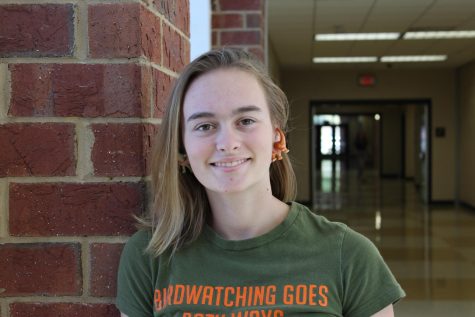
Libby Jones is a senior and a third-year reporter. She is one of the managing editors at The Bear Witness. She loves writing, art, and all...

